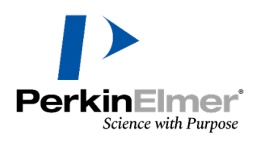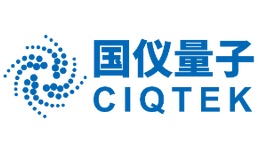方案详情文
智能文字提取功能测试中
SpectroscopicEUipsometry SpectroycopicEUipsometryOLED Thin FilmStructureCharacterisation OLED-Organic Light EmittingDiodes Melanie Gaillet-Application Engineer-Thin Film Division Organic Light Emitting Diodes (OLEDs) are currently under intense investigation for use inthe next generation of display technologies. The benefits of this technology include wideviewing angle, high emission efficiencies that result in high brightness with low powerconsumption and low operating voltage. As OLED devices are very lightweight they may beused in cellular phones, notebooks, digital video cameras, digital versatile disc (DVD) players,car stereos, televisions and many other consumer tools that require colour displays. The OLED is a display technology based on the use of organic polymers as the semiconductormaterial in Light-Emitting Diodes (LEDs). The organic materials used in OLED devices mayinclude "small" molecules or "macro" polymers. For OLED displays constructed of “small"molecules vapour sublimation in a vacuum chamber is the most convenient depositiontechnique. In the case of macro polymers solvent coating techniques are often used. The basic OLED cell structure consists of a stack of thinorganic layers sandwiched between a transparent anodegha g meignc camde. the andemecis hoies io teurst organic lover referrea as ine nole iniecton loverr’In addition to the hole injection layer the basic OLEDcell structure also comprises a "hole transport layer", an"emissive layer" and an “electron transport layer".When an appropriate voltage (typically a few volts) isharnes recamhing in the Amissiye lnver ta nroducecharges recombine in the emissive layer to producelight (electroluminescence). The structure of theorganic layers and the choice of anode and cathodeare designed to maximise the recombination processin the emissive layer, thus maximising the light outputfrom the OLED device. The overall thickness of thedevice is less than 2000 Angstroms. Typical OLED Structure HIL : Hole Injection LayerHTL : Hole Transport LayerEML: Emissive Layer ETL : Electron Transport Layer ITO : Indium Tin Oxide CuPc : Copper phthalocyanine NPB : Napthylphenylbiphenyl Alq3: Tris-(8-hydroxyquinoline) aluminum Spectroscopic Ellipsometry (SE) allows thenon-destructive characterisation of OLED structures with highaccuracy and precision. This note describes the successfulapplication of the Jobin Yvon UVISEL phase modulated SE forthis application. Ellipsometric data were acquired at an angle of incidence of56°, and the spectra represent the Is and Ic variables that aremeasured by phase modulated ellipsometers. Is and lc arerelated to the ellipsometric angles 平and A defined in thefundamental equation of ellipsometry as follows: Phase modulated ellipsometry allows accurate determinationof and from 0°- 45° and 0°-360° respectively with nodead areas. The refractive index and thickness of each organic layer wereextracted from the SE data analysis and are shown along withheopnical properfiesheayer The optical properties ot each organic material werecalculated using advanced dispersion formulae with multipleoscillators to characterise the materials in the range 310-1240nm. The ITO layer must be characterised as it is known to be aninhomogeneous material due to the deposition method orpost-treatments. The optical properties of ITO represent avariation inside the layer and must be taken into account inthe model. Alq3 Alq3 Doped NPB CuPc ITO Glass This document is not controctually binding under any circumstances - Printed in France-06/2003 France 5, avenue Arago Conclusion Phase Modulated Spectroscopic Ellipsometry is anexcelleenntt tteecchnique forthe highly accuratecharacterisation of complete OLED stacks. The techniqueallows the determination of film thickness, opticalproperties and the effect of dopants to the active layers.For very high throughput applications where large areaflat panels are to be characterised in a productionenvironment the Jobin Yvon FF-1000 ellipsometer has afully automated sample stage able to accept samples upto 1000 mm x 1000 mm. This accurate, automated thinfilm metrology tool delivers both unique performance andproven reliability for on-line quality control of productionprocesses. HORIBAGROUP EMISSION·FLUORESCENCE ·FORENSICS·[GRATINGSFOEM·OPTICAL SPEGIROSCOPY·RAMAN ·THIN FILM Phase Modulated Spectroscopic Ellipsometry is an excellent technique for the highly accurate characterization of complete OLED stacks. The technique allows the determination of film thickness, optical properties and the effect of dopants to the active layers.For very high throughput applicatios where large area flat panels are to be charactrised in a production environment the Jobin Yvon FF-1000 ellipsometeer has a fully automated sample stage able to accept samples up to 1000 mm× 1000 mm. This accurate, automated thin film metrology tool delivrs both unique performance and proven reliability for on-line quality control of production processes.
关闭-
1/2
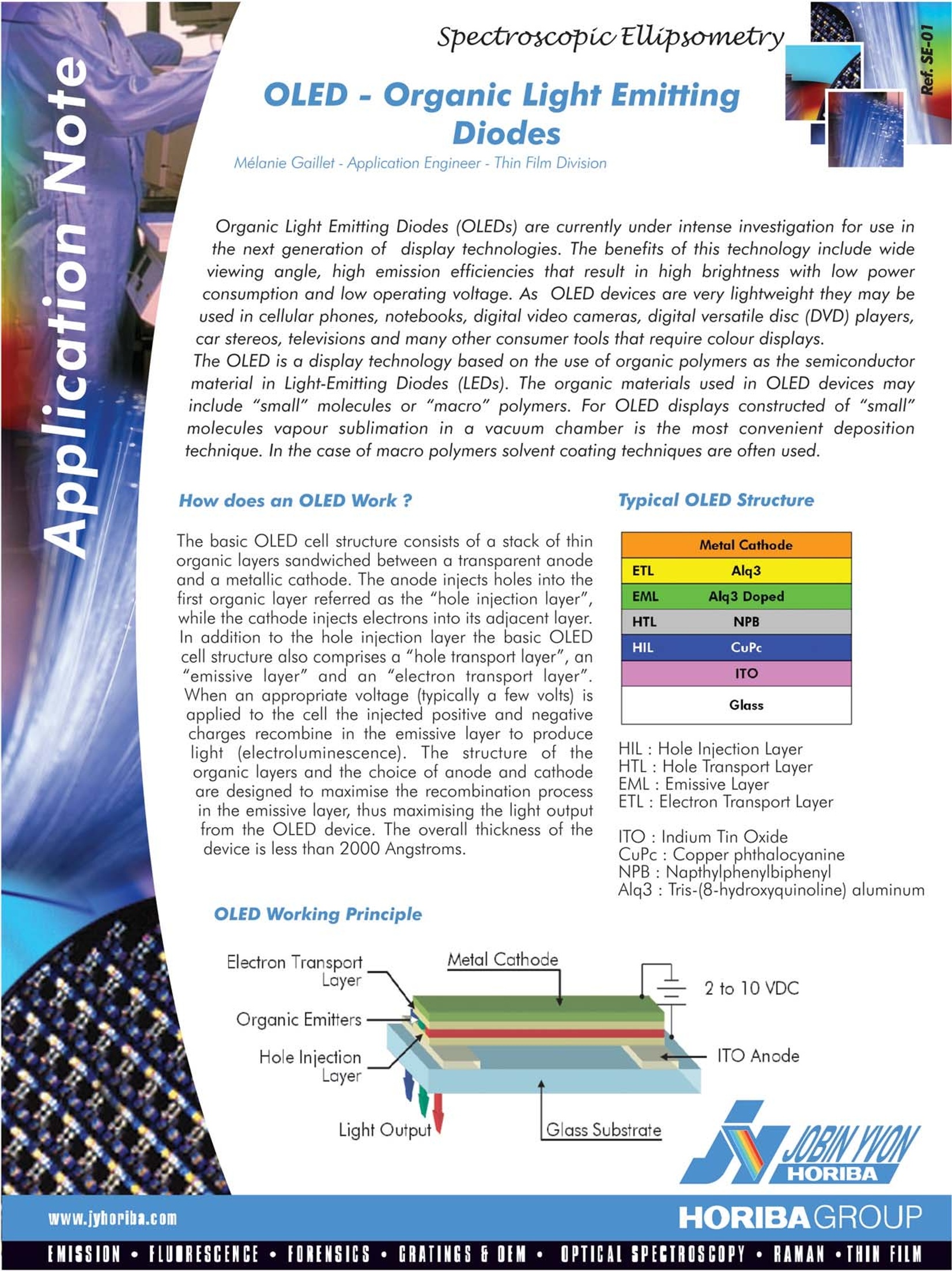
-
2/2
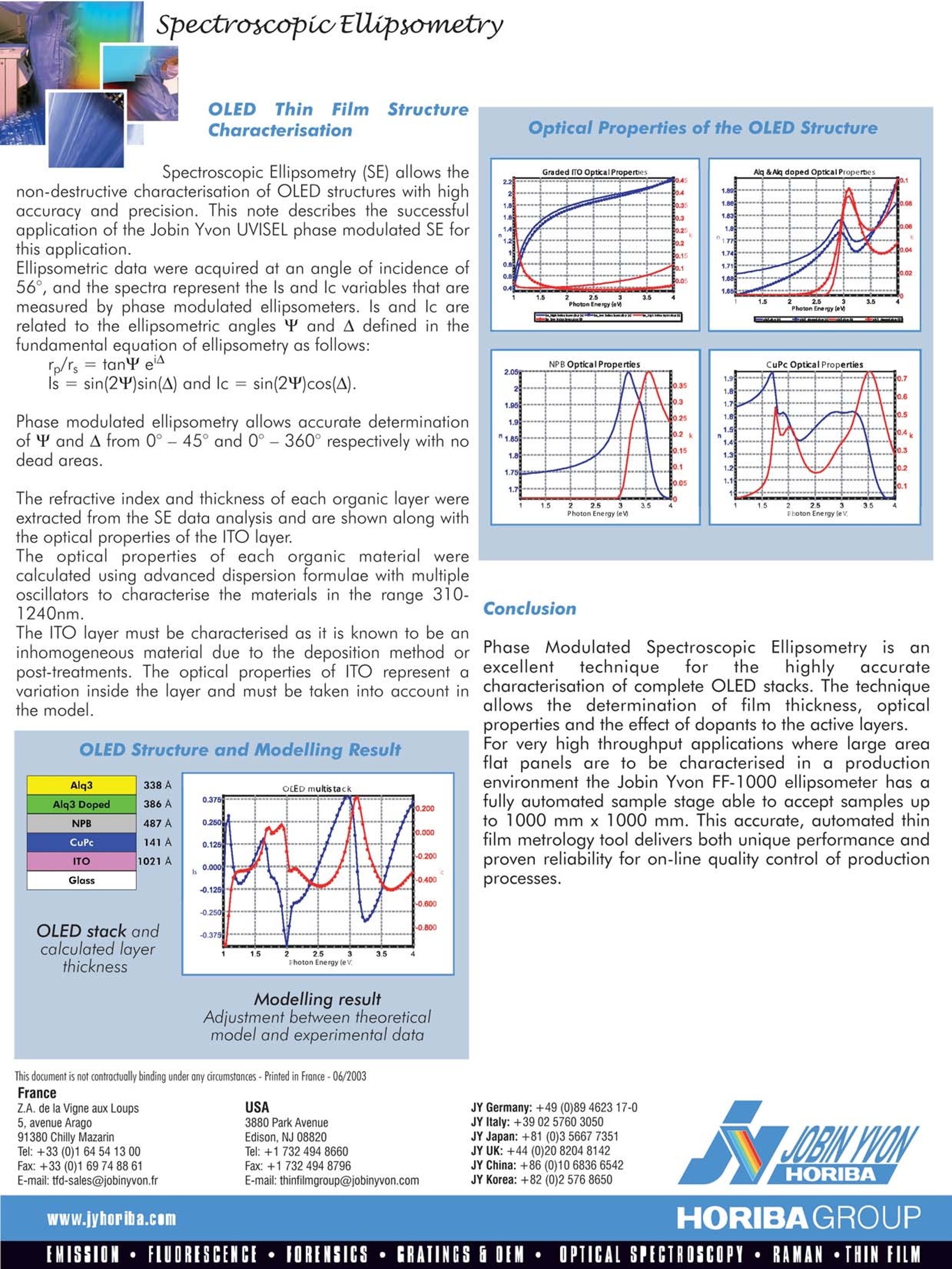
产品配置单
HORIBA(中国)为您提供《OLED-有机发光二极管中厚度,光学常数,掺杂的影响检测方案(椭偏仪)》,该方案主要用于光电器件中厚度,光学常数,掺杂的影响检测,参考标准《暂无》,《OLED-有机发光二极管中厚度,光学常数,掺杂的影响检测方案(椭偏仪)》用到的仪器有HORIBA UVISEL Plus研究级经典型椭偏仪 。
我要纠错
推荐专场
相关方案


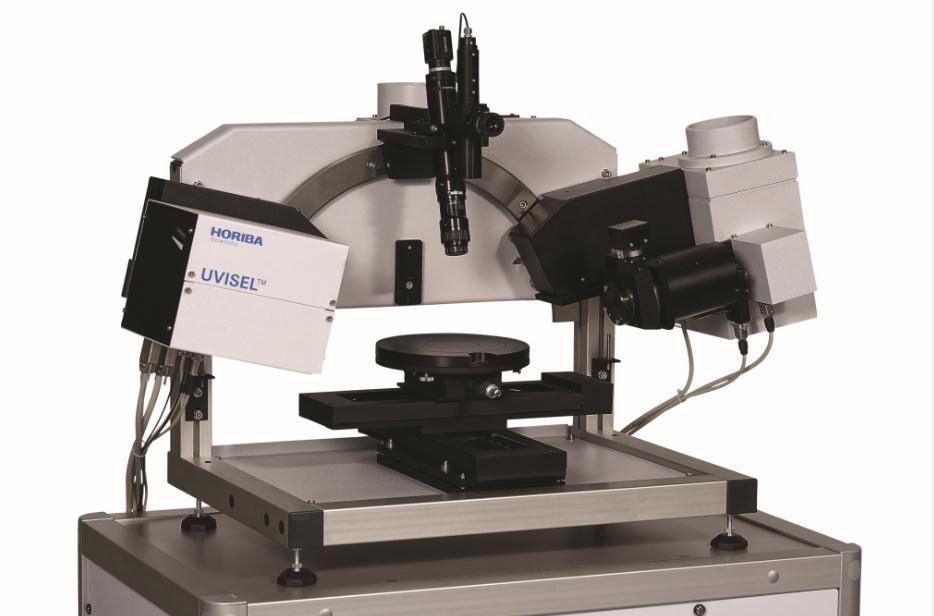
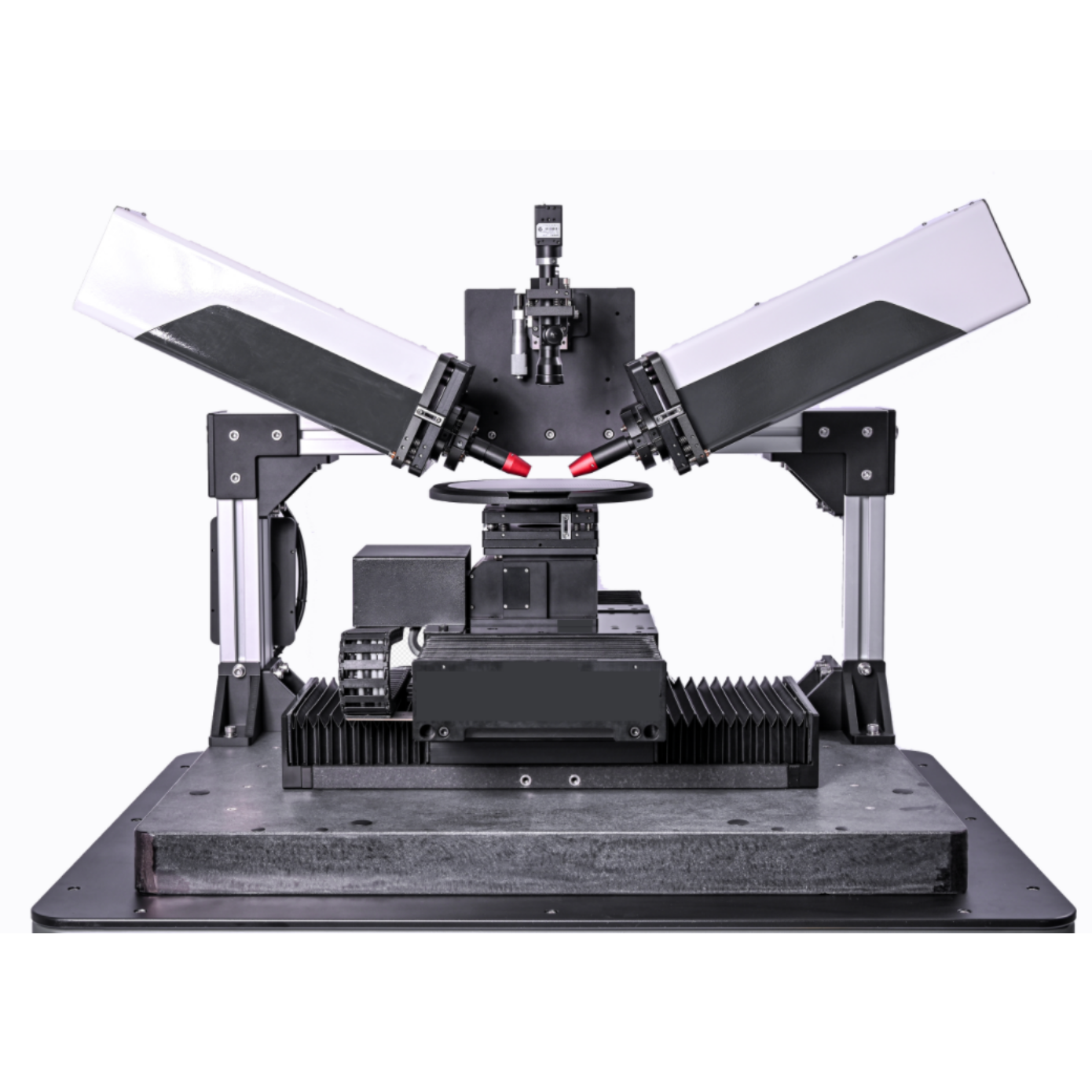
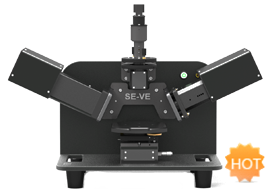
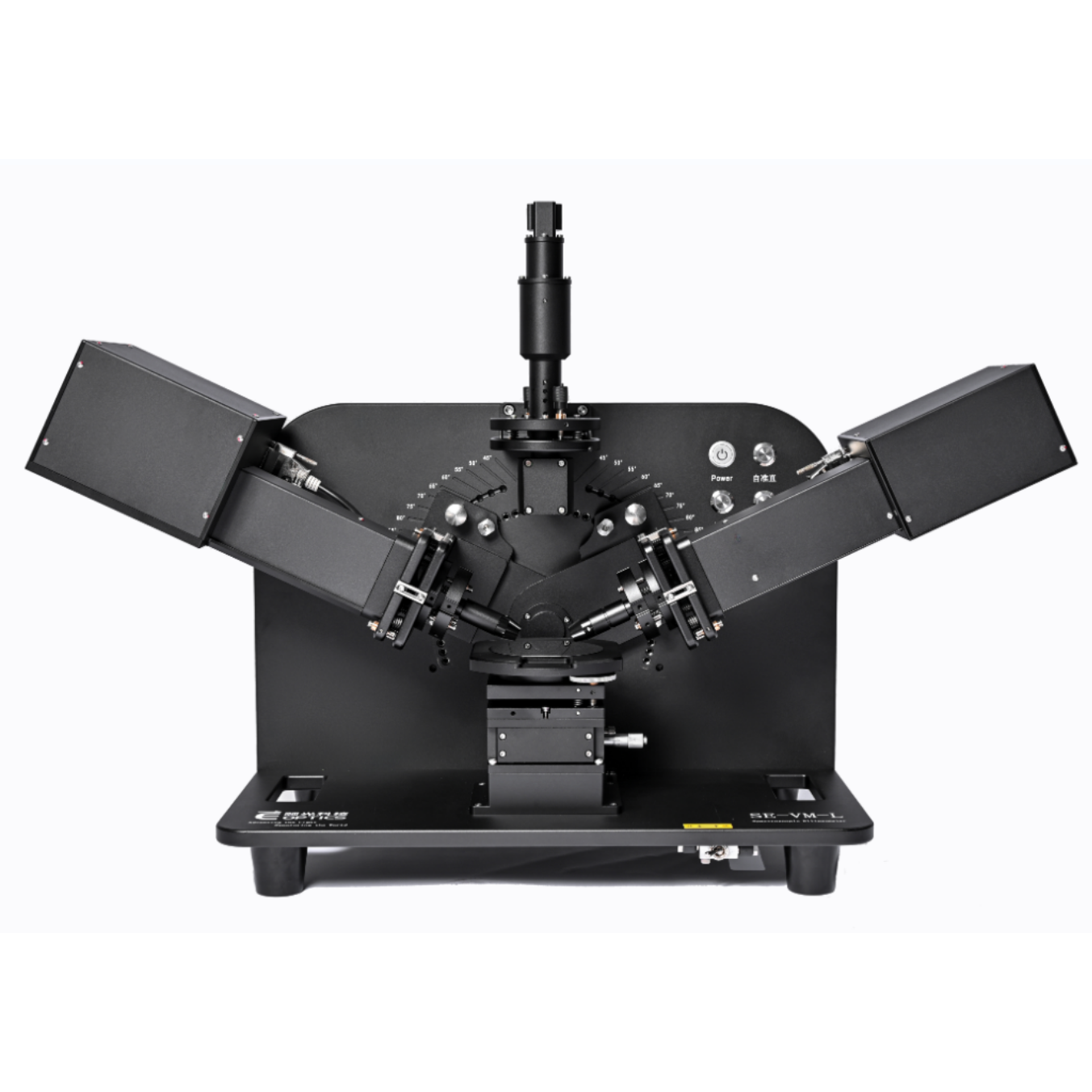
 咨询
咨询

